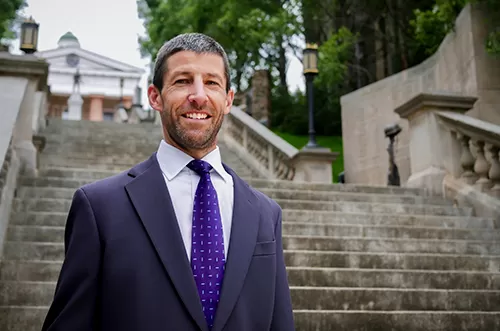Loch Levan Land L.P. v. Bd. of Supervisors, No. 181043, 2018 Va. LEXIS 204 (Va., Dec. 18, 2018)
In the early 1990s, the plaintiffs (collectively “HHHunt”) built an upscale housing development known as “Wyndham” in northern Henrico County (the “County”), abutting the Hanover County line. The Chickahominy River marks the border between the counties. To access the development, HHHunt also constructed Dominion Club Drive, a “spine” road connecting Wyndham with surrounding arteries. HHHunt’s original plans showed Dominion Club Drive extending into Hanover County, where it also owned several non-contiguous parcels of land. The physical road however, terminated in a cul-de-sac on the Henrico County side of the river. Since 1991, Henrico County’s Major Thoroughfare Plan has included Dominion Club Drive as built, but not the planned extension into Hanover County. In 1992, HHHunt posted a separate bond to extend Dominion Club Drive to the Chickahominy. Over the next 25 years, HHHunt updated the bond several times, but never constructed the road. In the interim, as a cost-saving measure, HHHunt split the plat for the unbuilt extension of Dominion Club Drive into two pieces.
By the end of 1992, HHHunt had received approval for two more developments adjacent to Wyndham, Wexford and Manor Park. When HHHunt recorded the Wexford plat, it also recorded a separate plat for the proposed Southern Segment of Dominion Club Drive, officially dubbed “Wyndham Connector Roads Phase 1C—Section 1” (“Section 1”). When it recorded the Manor Park plat, it likewise recorded a separate plat for the proposed Northern Segment, dubbed Wyndham Connector Roads Phase 1C—Section 2 (“Section 2”), which would extend Dominion Club Drive to the County line. Legally severing the road from the subdivisions provided HHHunt an economic advantage because it could put off building Section 2 until it was needed, rather than tying its completion to Wexford and Manor Park. HHHunt constructed Section 1, connecting Wexford and Manor Park to Wyndham, which the County added to its Major Thoroughfare Plan in 1992. HHHunt graded and laid stone in the area of the proposed Section 2, but made no further effort toward completion. It also blocked off the terminus of Section 1, preventing vehicle access. In 1996, HHHunt asked Henrico County to release the bond guaranteeing Section 2, stating the project was indefinitely postponed.
In 2016—having finally acquired sufficient contiguous land in Hanover County—HHHunt submitted a rezoning application for a new development north of the river. The plan required HHHunt to at last extend Dominion Club Drive across the County line. Backlash from Wyndham’s now well-established community came swiftly. Residents were already frustrated by the traffic in their neighborhood, especially during peak commute times.
In February 2017, the Henrico County Board of Supervisors concluded that the extension of Dominion Club Drive was not of public necessity and that the public would be better served by its abandonment. HHHunt filed suit challenging the Board’s decision; the circuit court affirmed. In its appeal, HHHunt argued that the Virginia Code granted it the unilateral right to complete the road indefinitely, and that the Board had violated its Constitutional rights because the decision amounted to an unlawful taking and was arbitrary and capricious.
Regarding HHHunt’s statutory claim, the Court affirmed the circuit court’s ruling that Va. Code Ann. § 15.2-2261(C) controlled, not Va. Code Ann. § 15.2-2261(F), as HHHunt asserted. Code § 15.2-2261(C) provides that
For so long as the final site plan remains valid in accordance with the provisions of this section, or in the case of a recorded plat for five years after approval, no change or amendment to any local ordinance, map, resolution, rule, regulation, policy or plan adopted subsequent to the date of approval of the recorded plat or final site plan shall adversely affect the right of the subdivider or developer[.]
Id. (emphasis added).
Code § 15.2-2261(F) provides that
An approved final subdivision plat that has been recorded, from which any part of the property subdivided has been conveyed to third parties (other than to the developer or local jurisdiction), shall remain valid for an indefinite period of time unless and until any portion of the property is subject to a vacation action[.]
Id. (emphasis added).
First, the Court found that in a bid to save money, HHHunt had intentionally carved out plats for the Dominion Club Drive extension(s) from the plats for the subdivided parcels. The road plats were therefore both legally distinct and unambiguously intact. Thus, by the plain meaning of the statutory text, the Code provision addressing “recorded plat[s]” controlled, not the provision addressing “subdivi[ded] plat[s].” Accordingly, the Court held that Section C’s five-year grace period applied.
HHHunt countered that the General Assembly’s intention in creating the statute was to “protect a developer’s vested rights in the overall development—not just constituent parts of the development.” According to HHHunt, its rights would thus be undermined unless the road and subdivisions were considered as a whole. And, since the road was inextricably linked to plats that were subdivided and sold to third parties, HHHunt contended that it enjoyed Section F’s “indefinite period” to complete the extension. Further, HHHunt argued that applying the plain meaning of the statute in such cases would absurdly allow localities to isolate subdivisions ad hoc by stopping developers from finishing access roads.
The Court disagreed, citing to Code § 33.2-920, which authorizes Virginia courts to override a locality’s decision to abandon roads serving a public necessity. The Court also noted that five years is plenty of time to build a road. Thus, the Court held that it was “entirely possible” to apply the statute as written while honoring the General Assembly’s “apparent intent” and avoiding absurd outcomes.
HHHunt’s constitutional claims fared no better. First, state action denying a proposed land use is only a “taking” under the US or Virginia Constitutions where the denial proscribes a legitimate use that the land owner is “diligently pursuing,” and would thus likely accomplish but for the government’s intervention. Here, HHHunt failed to act on its extension plan for 25 years. Second, state action in this regard is “arbitrary and capricious” only where it lacks a rational basis. In this case, the Board had considered not only public opinion regarding HHHunt’s proposed road extension, but evaluated public necessity, irrespective of community sentiment. The Court further observed that there was no existing development the road would serve, and moreover, that HHHunt’s terminal barrier had ensured the public could not travel (and thus come to rely on) the proposed road’s intended path. Accordingly, the sole presently-existing necessity was a private one belonging to HHHunt. As it duly studied the circumstances and stated a rational basis for its decision, the Board did not act arbitrarily and capriciously.





